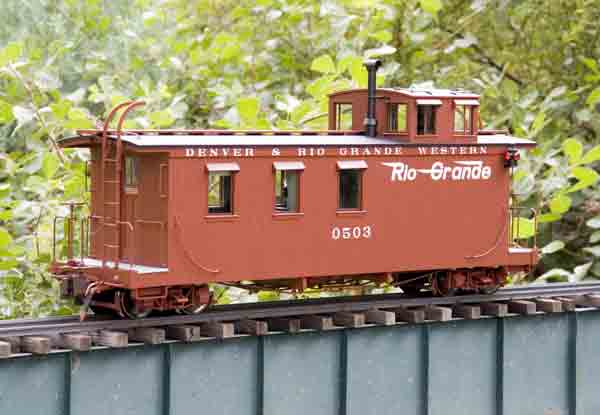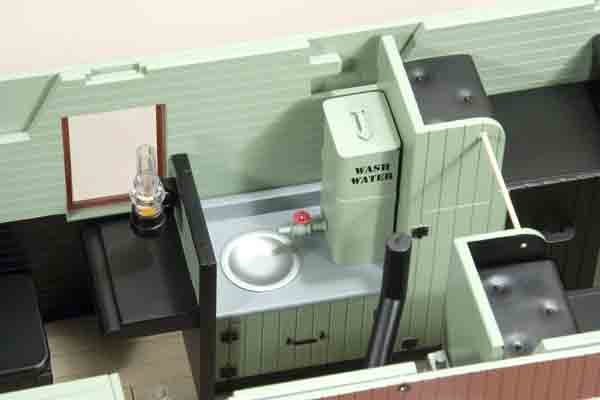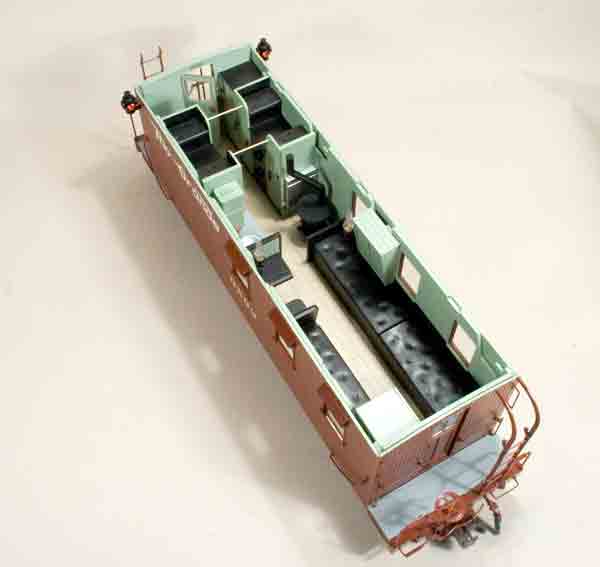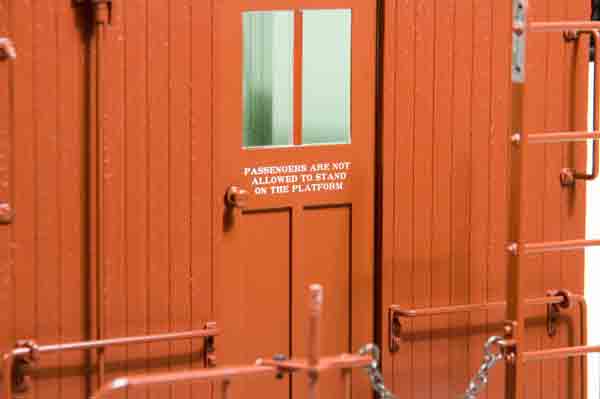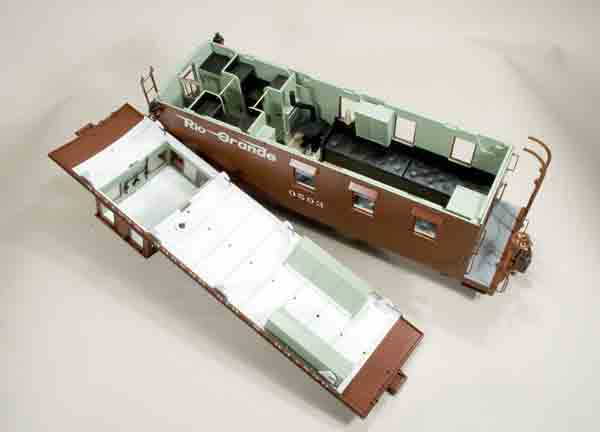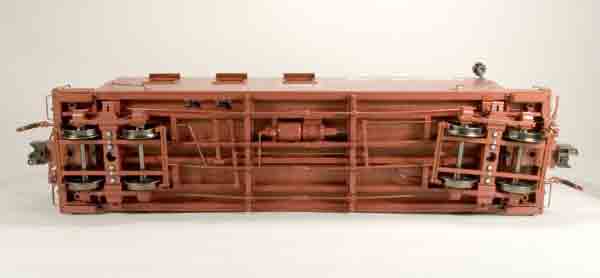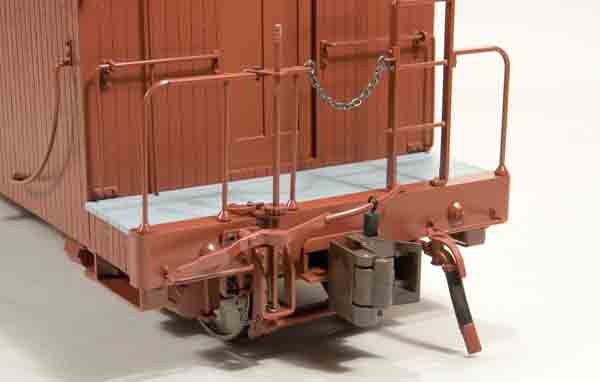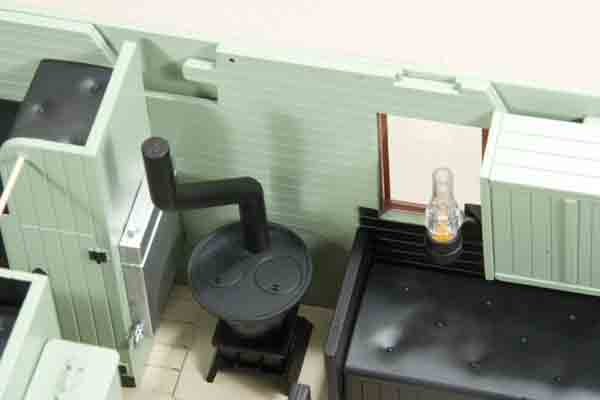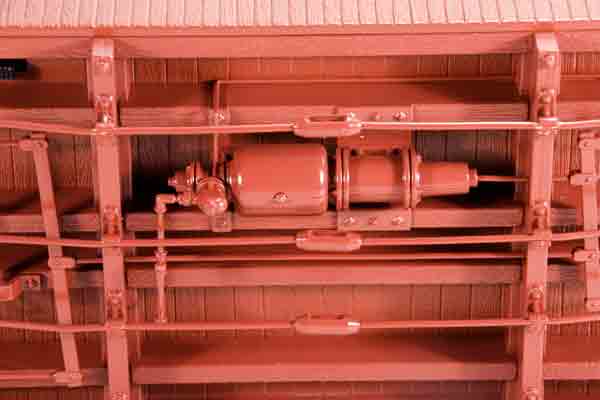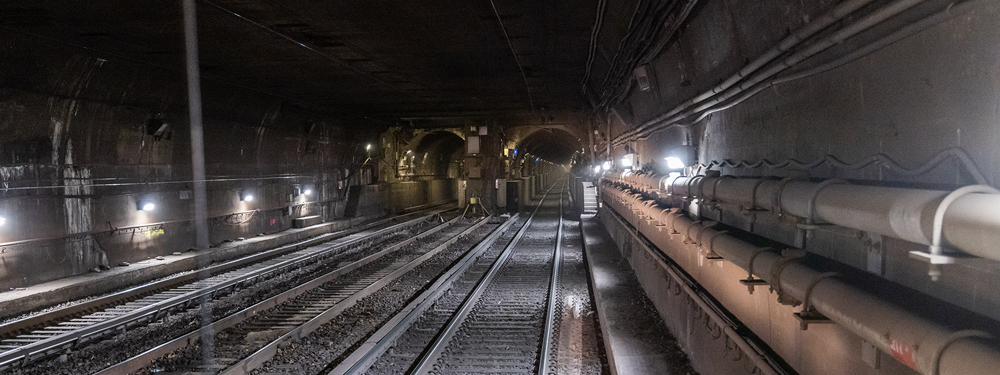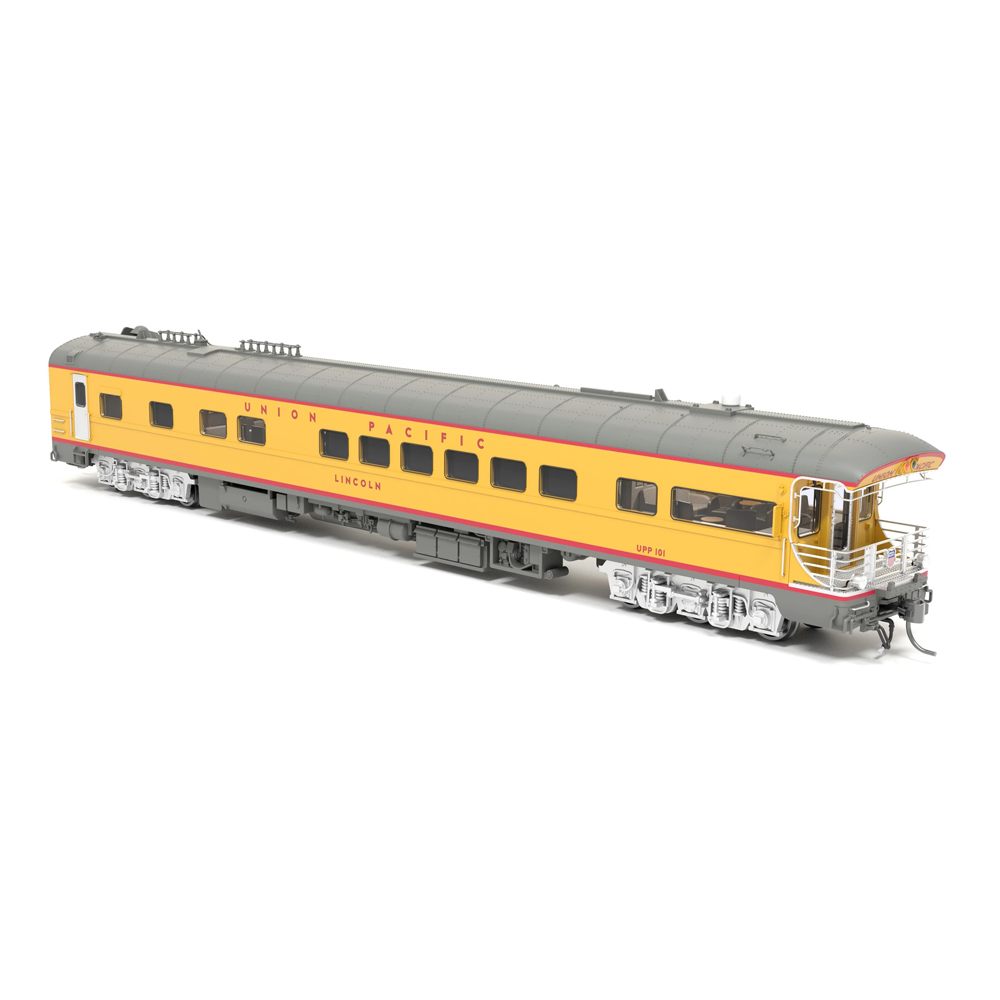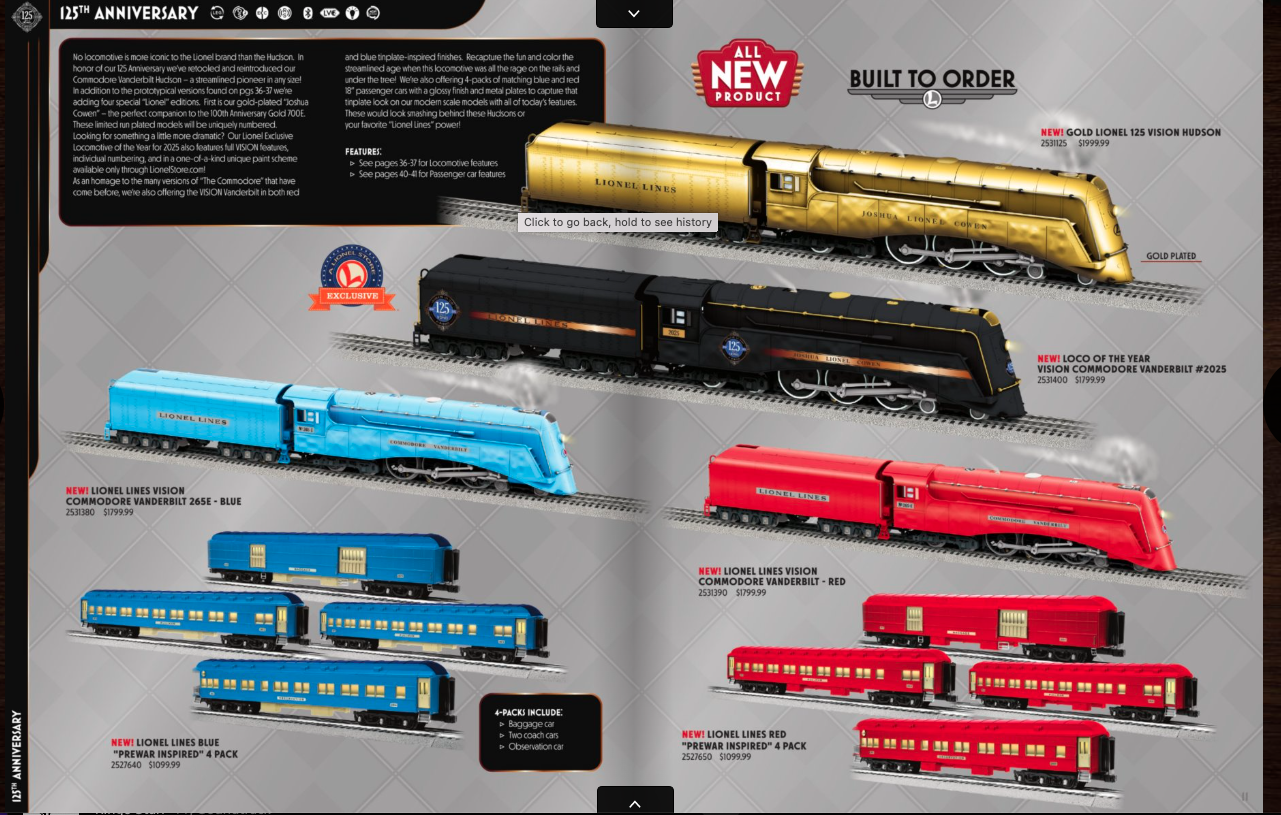1:20.3 scale, gauge 1, long caboose
Bachmann Industries
1400 East Erie Avenue
Philadelphia PA 19124
Price: $275
Web site: www.bachmanntrains.com
Plastic-and-metal model of a D&RGW long caboose; DCC ready; complete interior; working marker lights and table lamps; 8-wheel power pickup from track; complete underbody detail; sliding windows in cupola; sprung, diecast trucks; diecast couplers and other parts; working knuckles; two sets of body-mounted couplers provided; opening doors; switches under car to control lights. Dimensions: Length over end beams, 175/8″; width, 4½”; height over cupola; 7½”. In 1:20.3 scale, this works out to 29’10” x 7’7″ x 12’8″, respectively
Pros: High fidelity to prototype; excellent paint and graphics; high level of detail, inside and out; lights powered by battery or DCC track power; free-rolling trucks
Cons: Heavy piece of rolling stock (five pounds); roof fiddly to remove
Bachmann’s model is a beaut. It totally captures the essence of the prototype. The body and some of the details are plastic, while much of the detail work, as well as the trucks and couplers, are die-cast metal. This makes for a heavy car, at five pounds. The underbody detail is complete and well rendered, down to the scale pipe fittings. All of the car’s end-platform detail looks right and is finely reproduced. However, the plastic marker lamps and their attendant brackets-little more than plastic plugs that fit into the holes in the side of the car-are a little clunky, but this is not a major point.
Inside the caboose is a complete, well-detailed interior, painted in prototypical colors and including a pair of working “kerosene” lamps. This is almost a pity, as little can actually be seen by peering in the windows or doors. You have to remove the roof to enjoy the full splendor of the interior detail. This is a fiddly operation. The instructions say to remove the eight micro-miniature screws holding the four curved ladder extensions onto the ladders. I found that you actually only need to remove the two extensions on the long end of the caboose. You must have a very small phillips screwdriver to do this. You then slide the roof back, to release the catches that hold it in place. Then you can carefully lift it off.
This caboose has a circuit board under one of the bench seats. A dummy socket is installed, which must be removed if you’re installing a DCC decoder. Across the aisle, under the other bench seat, is a battery compartment for a pair of AA batteries, should you not wish to use DCC to control the lights. The caboose comes with nine pages of diagrams and instructions that cover all parts, disassembly, electronics, and more. The drawings are well done and easy to understand. What is not included, and what I would like to have seen for the uninitiated, is an introductory statement that told just what all the electronics were for and why a caboose needed a DCC socket to begin with. I finally figured it out by studying the drawings, but a statement of this nature would have made things instantly clear
.
Beneath the car, placed unobtrusively, are a pair of switches. One allows you to select DCC/battery/off, while the other selects marker lights, table lamps, or both.
Two pair of body-mounted couplers are included (no truck-mounted couplers are included). These are identical except for coupler height. Prototypically mounted couplers are installed on the car. If your mating rolling stock uses the lower, truck-mounted couplers, a pair of offset couplers is also supplied. Because of the length of the caboose and the body-mounted couplers, the vehicle is really only suitable for wider-radius track.
Although the caboose is highly detailed, with accurate-cross-section details, it does not feel fragile. Construction is robust and materials were chosen for strength. This is a wonderful piece of equipment, well conceived and beautifully realized. It lacks only weathering to be right at home on any Colorado narrow-gauge railroad.





